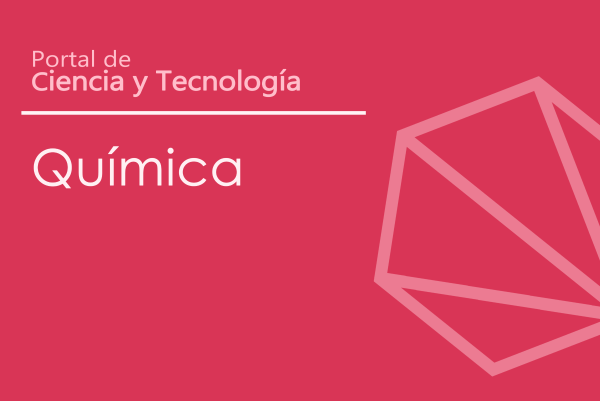Química
Disciplina temática


Universidade Nova de Lisboa
Lisboa, PortugalPublicaciones en colaboración con investigadores/as de Universidade Nova de Lisboa (24)
2024
-
Ir(III) Half-Sandwich Photosensitizers with a π-Expansive Ligand for Efficient Anticancer Photodynamic Therapy
Journal of Medicinal Chemistry, Vol. 67, Núm. 3, pp. 1783-1811
-
Towards efficient Ir(iii) anticancer photodynamic therapy agents by extending π-conjugation on N^N ligands
Dalton Transactions, Vol. 53, Núm. 27, pp. 11393-11409
2023
-
Thermal and photochemical reactions of n-pyridinebenzopyrylium multistate of species (n = 2′,3′,4′). Exploring the synthetic potentialities from the unique reactivity of position 2′
Journal of Photochemistry and Photobiology A: Chemistry, Vol. 440
2022
-
Investigation of the influence of chirality and halogen atoms on the anticancer activity of enantiopure palladium(ii) complexes derived from chiral amino-alcohol Schiff bases and 2-picolylamine
New Journal of Chemistry, Vol. 46, Núm. 14, pp. 6470-6483
-
Platinum(II) and Copper(II) complexes of asymmetric halogen-substituted [NNʹO] ligands: Synthesis, characterization, structural investigations and antiproliferative activity
Bioorganic Chemistry, Vol. 119
2021
-
One-pot photocatalytic transformation of indolines into 3-thiocyanate indoles with new Ir(iii) photosensitizers bearing β-carbolines
Inorganic Chemistry Frontiers, Vol. 8, Núm. 5, pp. 1253-1270
-
Roadmap on dynamics of molecules and clusters in the gas phase
European Physical Journal D, Vol. 75, Núm. 5
2020
-
A diagnostic tool for assessing the conservation condition of cellulose nitrate and acetate in heritage collections: quantifying the degree of substitution by infrared spectroscopy
Heritage Science, Vol. 8, Núm. 1
-
Chemical evolution of the colour systems generated by riccionidin A, 3-deoxyanthocyanidins and anthocyanins
Phytochemistry, Vol. 174
-
Light-Mediated Toxicity of Porphyrin-Like Pigments from a Marine Polychaeta
Marine Drugs, Vol. 18, Núm. 6
-
Multistate of chemical species of 2,6-Bis(arylidene)cyclohexanones. On the role of chalcone and spiro species
Dyes and Pigments, Vol. 174
-
Non-emissive RuII Polypyridyl Complexes as Efficient and Selective Photosensitizers for the Photooxidation of Benzylamines
Chemistry - A European Journal, Vol. 26, Núm. 53, pp. 12219-12232
2019
-
A model compound for pyridinechalcone-based multistate systems. Ring opening-closure as the slowest kinetic step of the multistate
New Journal of Chemistry, Vol. 43, Núm. 46, pp. 18229-18239
-
Generalization of the anthocyanins kinetics and thermodynamics multistate to 2,6-bis(2-hydroxybenzylidene)cyclohexanones
Dyes and Pigments, Vol. 163, pp. 573-588
-
Ground and excited state properties of furanoflavylium derivatives
Physical Chemistry Chemical Physics, Vol. 21, Núm. 38, pp. 21651-21662
-
PH-Dependent Multistate System Generated by a Synthetic Furanoflavylium Compound: An Ancestor of the Anthocyanin Multistate of Chemical Species
ACS Omega, Vol. 4, Núm. 2, pp. 4091-4100
2018
-
Achieving Complexity at the Bottom. 2,6-Bis(arylidene)cyclohexanones and Anthocyanins: The Same General Multistate of Species
ACS Omega, Vol. 3, Núm. 12, pp. 17853-17862
-
Thermodynamic Stability of Flavylium Salts as a Valuable Tool to Design the Synthesis of A-Type Proanthocyanidin Analogues
Journal of Organic Chemistry, Vol. 83, Núm. 19, pp. 12297-12304
2016
-
Effect of Methyl, Hydroxyl, and Chloro Substituents in Position 3 of 3′,4′,7-Trihydroxyflavylium: Stability, Kinetics, and Thermodynamics
Chemistry - A European Journal, Vol. 22, Núm. 35, pp. 12495-12505
2012
-
Preparation of organometallic ruthenium-arene-diaminotriazine complexes as binding agents to DNA
Chemistry - An Asian Journal, Vol. 7, Núm. 4, pp. 788-801